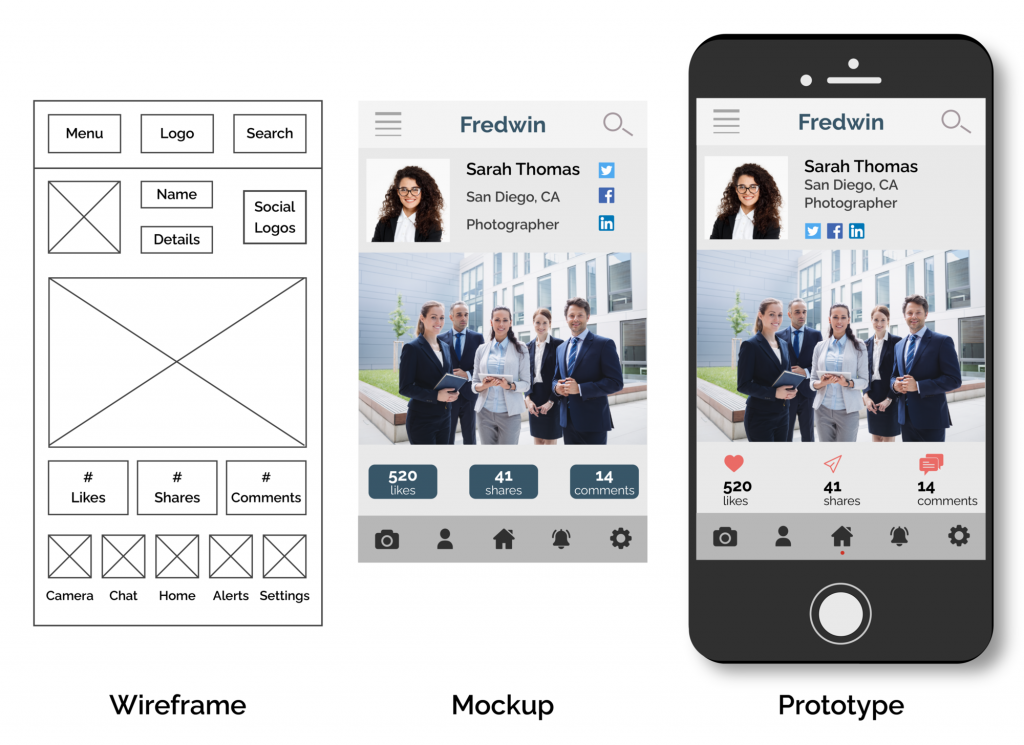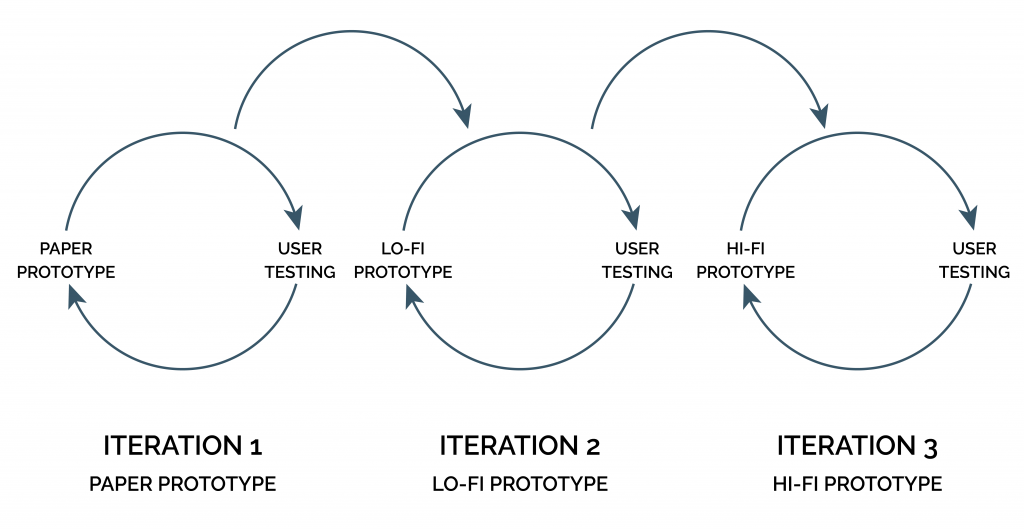To the uninitiated, wireframes, mockups, and prototypes appear to be synonymous. They’re used interchangeably by the layperson and understandably so. But for product and design folks in the digital space, these differentiated outputs serve different requirements. Wireframing, mockuping, and prototyping are processes in the early stages of product development, especially the web, mobile, and native applications. In this context, they’re typically defined as follows:
● A wireframe is a quick sketch of a product intended to convey its desired functionalities.
● A mockup is a realistic design of a product designed to gather feedback on its visual elements.
● A prototype is an interactive simulation of a product designed to test the user experience.
 It’s worth noting that diving into each step is not a straightforward box-ticking activity. Instead, these are problem-solving exercises that entail consensus-building, testing, and iteration, among others. For instance, product teams leverage design thinking methods to bring out user-centric approaches throughout the product development process.
It’s worth noting that diving into each step is not a straightforward box-ticking activity. Instead, these are problem-solving exercises that entail consensus-building, testing, and iteration, among others. For instance, product teams leverage design thinking methods to bring out user-centric approaches throughout the product development process.
Wireframes
Wireframes are basic, black and white renderings that focus on what the features and functionalities are intended to do. For example, a low-fidelity user interface representation depicts how information is structured and which content is grouped. Wireframing is far from drawing up meaningless sets of grey boxes, although they may appear that way. Instead, as the first scratch of a project, wireframes are ideally accompanied with brief notes to explain vital visual elements and how they interact with each other. A wireframe is rarely deployed as a testing material but helps build consensus and gather early feedback. These may even be deployed for guerilla-style research where initial insights suffice and methodological rigor is not yet essential.
Mockups
Taking off from wireframes, a mockup would then incorporate design choices, particularly color, font, and icons. Designers often include content to approximate the final output, even if these are placeholder text and photos. Visually, the ideal mockup should resemble the intended look and feel of any given digital product. Mockups remain a static output, but UX designers should solicit feedback regarding its visual components and aesthetic qualities. These are also particularly helpful in solidifying buy-in and support from high-level decision-makers, mainly clients and management, by dazzling them with what the outcome could eventually look like.
Prototypes
A prototype may or may not exactly look like the final product, but it should simulate the intended experience. It needs to be stressed that the heart of prototyping lies in user testing. Letting sample users navigate through the interface informs development teams how to enhance user experience better. As veteran UX designers and product teams know too well, prototyping is about observing what users do and not about what they say they’re going to do. In this process, the interface may not yet be linked with backend mechanisms. This enables product teams to test user experience before allowing the developers or engineers to begin their work. Interactivity can be tested with various tools without needing code. Product teams may also do some preliminary A/B testing to compare two different versions of a prototype to assess which one performs better.
Wireframes and mockups present to stakeholders how a product looks and how it should work. On the other hand, prototypes demonstrate how it works.
| Wireframe | Mockup | Prototype | |
| Purpose | To develop and gain consensus on product functionalities | To collect feedback on visual elements | To collect feedback by testing user experience |
| Visual elements | Black, white, and grey boxes that present structure | Must incorporate colors, fonts, icons, and all design elements | Visual elements must be interactive and demonstrate navigation |
| Design fidelity | Low | Medium to High | High |
| Interactivity | Static | Static | Dynamic or interactive |
| Time and cost invested | Low | Middle | High |
| Creator | Product team, project manager, and UX designer | UX designer | UX designer and/or developer |
Is it necessary to wireframe, mockup, and prototype – and in that order?
This is an ongoing debate; product teams have the ways they have settled into. Resources and time play a significant role in any development process. Some projects can afford to do this step by step and take their time to iterate their wireframes, mockups and even conduct well-structured prototyping studies and experiments. And even then, the envisioned product is not necessarily assured even when product teams commit to all these three design processes as ideally conceived. In other cases, after producing well-designed wireframes or medium-fidelity designs, some teams opt to do prototyping first, even before finalizing their fully designed mockups. It’s also not uncommon for projects with tight deadlines to do their prototyping with an interface already coded by their developers.

Early-stage product development is a dynamic process, each with its unique dependencies, circumstances, and limitations. Even the UX tools and applications at hand influence the design process. Professionals in this space are already well-versed with prototyping tools such as Balsamiq Mockups, Axure, Pidoco, Penultimate, and Jutinmind. These tools allow designers and product teams to create, edit and collaborate on wireframes and mockups. Some of these even extends to the creation of interactive prototypes.
Method to the Madness
Designing and developing products, incredibly complex and highly technical applications, is sometimes at its most daunting in the early stages. Wireframing, mockuping, and prototyping are methods to this seeming madness. Product teams, clients, stakeholders, and users can more easily break down the design process into digestible phases allowing for better engagement in the development of the product.
Will you be working on a project that requires careful and deliberate consideration for the user’s experience? Reach out to our experts at Radiant Digital to learn more about our product design and development process.


